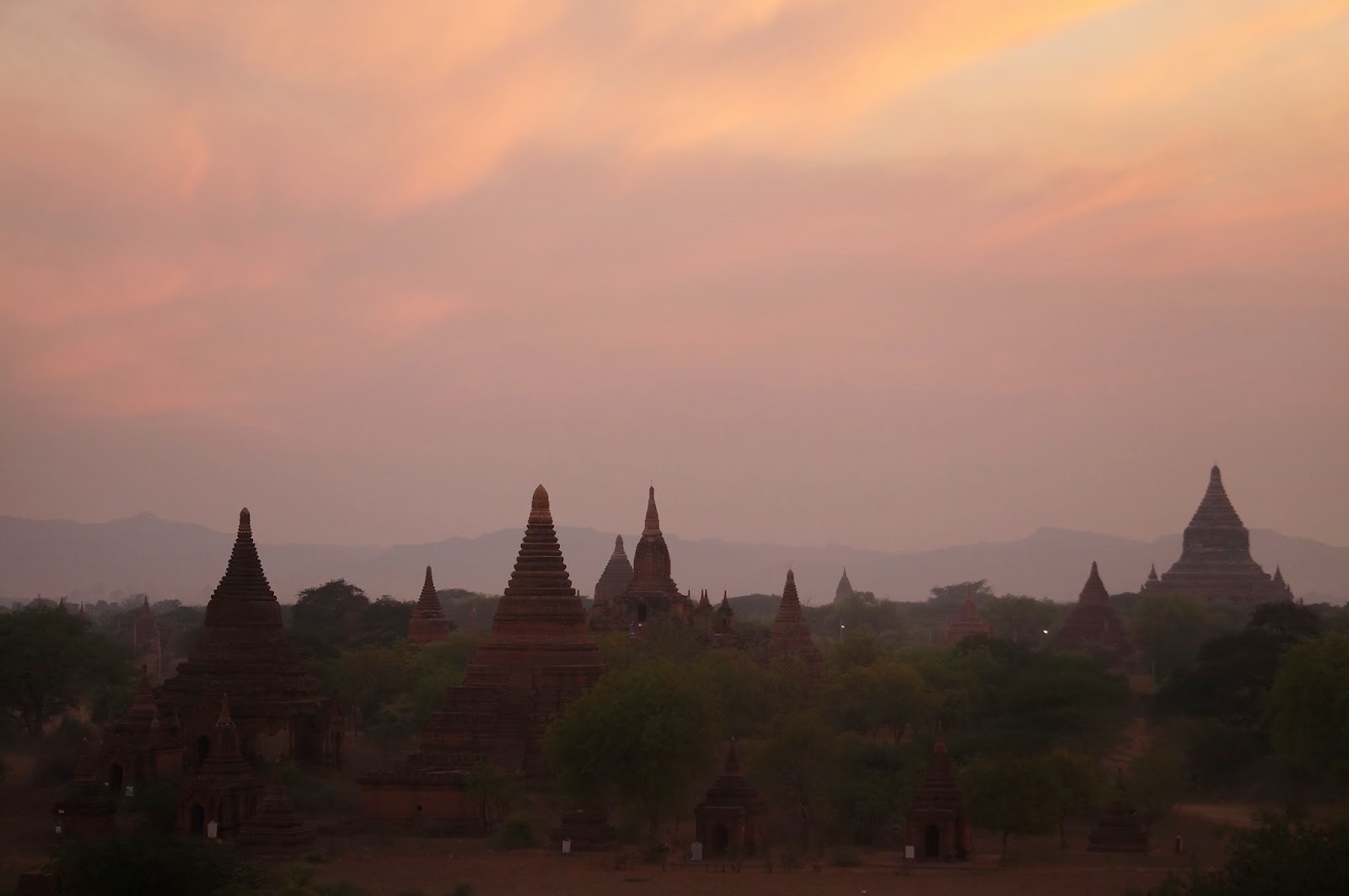Of all the countries we have visited, Myanmar was the biggest unknown for us. To be honest, we didn't know much about the country except that it was under military rule until 2011, when it was still known as Burma. We were surprised and delighted to find a country filled with friendly, hospitable people. Actually I would go as far to say that the Burmese are the friendliest people in Southeast Asia. They are also very happy and carefree, often breaking into song in public places.
 |
The best thing we did in Yangon was ride the train that does a loop of the city and its suburbs. It's by far the cheapest way to get around, but the comfort level is low: the benches are hard, the ride is bumpy, and the hot sun pierces through the open windows. Once it reaches the outskirts of the city, the train goes through small rice fields and farms. |
 | |||
We took the train in the afternoon, just when all the market vendors were on their way home with their unsold goods. The train doesn't actually come to a full stop at most stations, so it's a mad rush to get all their bags and crates on board. At one point, people were jumping through the windows as the train slowed through the station.
|
 |
The Bagan Archaeological Region was so much fun to explore, because there are new temples to see every few minutes. Some of them are similar, but because they were built over a few hundred years, most of them have a very unique style. The best ones to explore are the ones with tiny stair passages that lead to the top of the stupa. |
 |
The views were wonderful in every direction. The best thing about having small groups of temples spread out everywhere is that we rarely came across other people. Most of the time it felt like we had the place all to ourselves. |
 |
The highlight of all the temples in Bagan is the Shwezigon Pagoda. It is a tall golden monument that is similar to the one in Yangon. The only downside of of visiting the more popular temples is that people often follow you around, trying to sell you souvenirs or offering to be your guide. We much preferred wandering around the less popular sites that were quiet and peaceful. |
 |
We spent 3 days in Bagan, exploring as many temples as we could. I think we actually managed to see the majority of the main sites, but it would be impossible to see all of the many scattered temples. It wouldn't be so bad if there were some trees in the area, offering shade while cycling around. The heat made it very difficult to spend the afternoon outside, leaving us only morning and evening to visit the sites. |
 |
On our last day in Bagan we visited a small village that still lives a very traditional life. This kind woman showed us around the different bamboo houses, and demonstrated daily tasks undertaken by the villagers. The most impressive thing is watching the women carrying water from the well nearby. It's a hard task that has to be done twice every day. The only modern feature of this village were the few solar panels used to power lights in the evening. |
 |
This is the very curious daughter of our guide. On her face is yellow chalk, used by almost all women and children as sunscreen. Because this area is still new to tourists, the whole family was fascinated by our camera. They were eager to look at our pictures and couldn't stop giggling at the idea of having their photo taken. |
 |
Our short time in Myanmar was simply magic. We loved every second of it. There was a perfect mixture of beautiful places to explore, and delicious food to eat. It's a simple country that still leads a very traditional daily life. We feel very privileged to have visited it before it has been taken over by the tourism industry. |










































